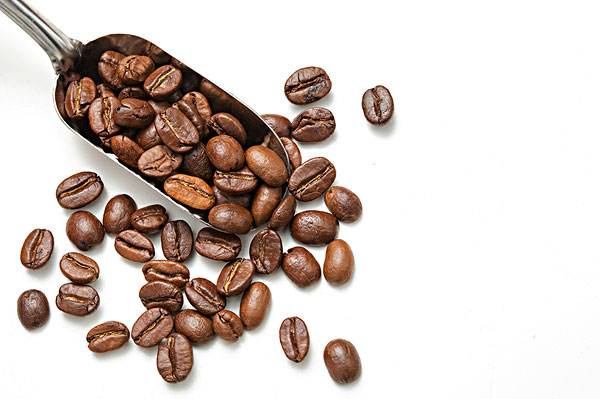History of Bolivian Coffee Origins, Bolivian Coffee Flavor Aroma Profile
Follow the caf é (Wechat official account vdailycom) and found that Beautiful Cafe opened a small shop of its own.
Just as Colombia is named in honor of Columbus, the discoverer of the New World, Brazil is named because Brazil is rich in trees called Brazilian trees. Bolivia commemorates Simon Bolivar, the hero who made an important contribution to the liberation of the whole of Latin America.
This is a strange country, the legal capital is Sucre, and the seat of government is La Paz. While Sucre has only the Supreme Court, La Paz is the seat of the government and parliament.

Bolivia is a landlocked country, about 1/3 of the territory is the Andes, rugged terrain, high altitude. La Paz is known as the capital with the highest elevation in the world. Although there is no beautiful tropical seaside scenery, the lake scenery and the unique scenery of the Andes are also extremely nostalgic, and the Uyuni Salt Lake, known as the Mirror of the Sky, is a wonder of the world. Without a developed economy, this is one of the poorest countries in South America. But the people here are quite optimistic and open, and it is true that different people have different pleasures of life.
Coffee was really commercially produced in Bolivia in the 1950s (at first coffee trees were planted around homes as fences), but the coffee industry grew rapidly in a very short time. This is partly due to the impact of the Brazilian frost in 1975, when Brazil's coffee industry was hit hard, and Bolivia's coffee industry took advantage of the opportunity to develop rapidly.
In the past, most of the coffee in Bolivia was of mediocre quality, but in recent years, the production of boutique coffee has developed rapidly, and there have been a lot of pretty good beans. In recent years, the COE (Cup of excellence) system, which was first implemented in Brazil, has gradually become popular. Bolivia has also introduced this system, which, on the one hand, can stimulate the enthusiasm of coffee farmers, on the other hand, it is also to improve the quality of coffee. COE beans are better than ordinary coffee in both raw and roasted coffee.
The aroma of Bolivian coffee is rich and unique, both the aroma of ground beans and the aroma of coffee are obviously rich, similar to the mixture of flower and fruit aroma, impressive.
The acidity is medium and low, but the feeling is not monotonous, but calm and generous, soft and fresh. In the sour taste, you can even feel the sour taste of citrus fruits.
The overall taste of Bolivian coffee is rich and balanced, in addition to the beautiful sour taste, there is also a shallow chocolate flavor, smooth taste is more smooth, by contrast, the bitter taste is not obvious. The aftertaste of the coffee is very good, and the sweet taste in the mouth lingers after drinking it, and the wonderful experience of this coffee is unforgettable.
Every coffee-producing country should not be ignored, because good coffee is independent of countries. Good coffee should be shared with everyone. Although Bolivian coffee is not well known, I believe that with the enthusiasm and seriousness of the people here, Bolivian coffee will be tasted and shared by more and more friends.
Important Notice :
前街咖啡 FrontStreet Coffee has moved to new addredd:
FrontStreet Coffee Address: 315,Donghua East Road,GuangZhou
Tel:020 38364473
- Prev

An introduction to the flavor of Bolivian coffee beans in South America
Following caf é (Wechat official account vdailycom) found that Beautiful Caf é opened a small shop rich in coffee beans in South America, and Bolivia is no exception. The unique rainforest environment in some parts of Bolivia provides excellent natural conditions for the growth of organic coffee. The aroma of Bolivian coffee is rich and unique, whether it is the aroma of ground beans or made.
- Next

Introduction to the birthplace of Rosa Coffee and its flavor
Following Cafe (Wechat official account vdailycom) found that the beautiful cafe opened a small shop of its own, Geisha, which was found in the rose forest of Ethiopia in 1931 and sent to the Coffee Research Institute in Kenya; it was introduced to Uganda and Tanzania in 1936, Costa Rica in 1953, and Panama by Francesca of Dongba Seven Farm Garden in the 1970s.
Related
- Detailed explanation of Jadeite planting Land in Panamanian Jadeite Manor introduction to the grading system of Jadeite competitive bidding, Red bid, Green bid and Rose Summer
- Story of Coffee planting in Brenka region of Costa Rica Stonehenge Manor anaerobic heavy honey treatment of flavor mouth
- What's on the barrel of Blue Mountain Coffee beans?
- Can American coffee also pull flowers? How to use hot American style to pull out a good-looking pattern?
- Can you make a cold extract with coffee beans? What is the right proportion for cold-extracted coffee formula?
- Indonesian PWN Gold Mandrine Coffee Origin Features Flavor How to Chong? Mandolin coffee is American.
- A brief introduction to the flavor characteristics of Brazilian yellow bourbon coffee beans
- What is the effect of different water quality on the flavor of cold-extracted coffee? What kind of water is best for brewing coffee?
- Why do you think of Rose Summer whenever you mention Panamanian coffee?
- Introduction to the characteristics of authentic blue mountain coffee bean producing areas? What is the CIB Coffee Authority in Jamaica?

